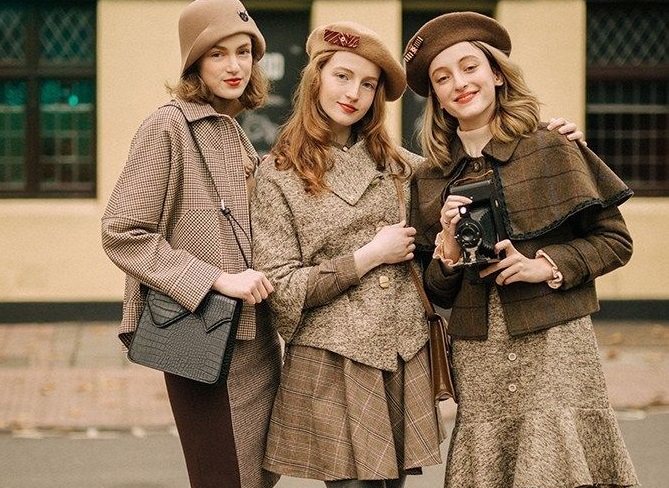When one thinks of vintage automobiles, the 1957 Chevrolet Bel Air often springs to mind. This iconic car, a paragon of mid-20th-century design, embodies the apex of American automotive engineering and style. But it is not just the shimmering exterior and sleek lines that draw enthusiasts and collectors alike; it is the enchanting interior that leaves a lasting impression. In the world of vintage automobiles, the interior of the 1957 Chevrolet Bel Air is not merely a space for driving; it is a portal to an era defined by aspiration and nostalgia.
The interior of the Bel Air is a harmonious synthesis of aesthetics and functionality, characterized by its meticulous attention to detail. Step inside, and the first thing that captures the eye is the vibrant color palette. Upholstered in a lavish two-tone scheme—a choice that became a hallmark of the model—its seats are often clad in luxurious materials that reflect the opulence of the time. Shades of turquoise and white or red and black create an enticing visual feast that awakens a sense of joy and celebration. The lavishness of these textile selections is a nod to the burgeoning post-war economy, where cars became not just a mode of transport but a symbol of success and personal expression.
The dashboard of the Bel Air is another captivating element. Made with a flamboyant yet elegant flair, it boasts chrome accents that gleam under the light, evoking feelings of glamour and elegance reminiscent of Hollywood’s golden age. The cockpit-style layout exudes a sense of snugness and intimacy. Speedometers and analog dials provide a tactile experience that digital displays today cannot replicate. There’s an irreplaceable quality in the tactile feedback of turning dials, pulling knobs, and the distinct sound of buttons clicking. This interaction becomes a dance between driver and machine, creating a connection that few modern vehicles can achieve.
Furthermore, the layout of the 1957 Chevrolet Bel Air’s interior reveals the consideration for both driver and passengers. The ample legroom and spacious seats welcome everyone aboard, transforming the drive into an experience characterized by camaraderie and connection. Family road trips or leisurely weekend drives became cherished events, bringing people together, often filled with laughter and stories, all happening within the confines of this magnificent automobile.
Yet, what lies beneath this sumptuous upholstery and chrome details is a more profound commentary on American life during the 1950s. The fascination with vintage interiors, particularly that of the Bel Air, is intertwined with a longing for simpler times. Post-war America was filled with optimism, a burgeoning consumer culture, and a desire for the new and the exciting. The Bel Air encapsulated this sentiment, becoming a symbol of freedom and exploration in an era when road trips became a quintessential part of American life.
Moreover, the 1957 Chevrolet Bel Air’s interior serves as a microcosm of cultural shifts occurring at that time. As consumerism flourished, so did the desire for personalization. Owners often customized their vehicles, choosing different fabrics, colors, and accessories to reflect their personalities. This drive for individuality is not a recent phenomenon; it traces its roots back to that era and remains a significant aspect of automotive culture today. Vintage cars elicit admiration not just for their design, but for the stories and identities they carry within.
The allure of the Bel Air’s interior also lies in its craftsmanship. The quality of components speaks volumes about the era. Unlike today’s focus on cost-cutting and mass production, each Bel Air was imbued with a sense of artistry. The hand-stitched seats, the precise fitting of panels, and the intricate detailing of the dashboard all demonstrate a craftsmanship level that has become a rarity in modern manufacturing. This appreciation for quality in the Bel Air resonates with many; it serves as a reminder that once upon a time, attention to detail was paramount.
Another aspect worth discussing is the nostalgia tied to the Bel Air’s interior. For many, this car evokes cherished memories of family vacations, first dates, and freedom on the open road. It is not just a vehicle; it is a vessel of memories. When individuals set foot inside one, they are transported to simpler times, igniting a profound yearning for an era defined by charm and carefreeness. Each dent and scratch on the steering wheel tells a story; each ripple in the fabric bears witness to adventures past. It is this deeply ingrained emotional connection that fuels the ongoing fascination with vintage vehicles.
In the realm where vintage meets contemporary, the 1957 Chevrolet Bel Air continues to inspire a new generation. Enthusiasts are not merely interested in owning a piece of history; they engage in restoring and preserving these vehicles, ensuring that their stories endure for future generations. Modifications respecting the original aesthetic while integrating modern technology foster a bridge between past and present, allowing the magic of the Bel Air’s interior to perpetuate.
In essence, the 1957 Chevrolet Bel Air’s interior transcends its functional purpose. It stands as a testament to an era of artistry, cultural evolution, and emotional connections. From the vivid colors to the luxurious materials, every element invites admiration and evokes a sense of reverence for a bygone age. As the wheels turn and the engine roars, the Bel Air carries with it not just passengers, but also stories, dreams, and the enduring spirit of adventure. This timeless classic will forever remain more than just a car; it is a cherished artifact that illuminates the tapestry of American history.
